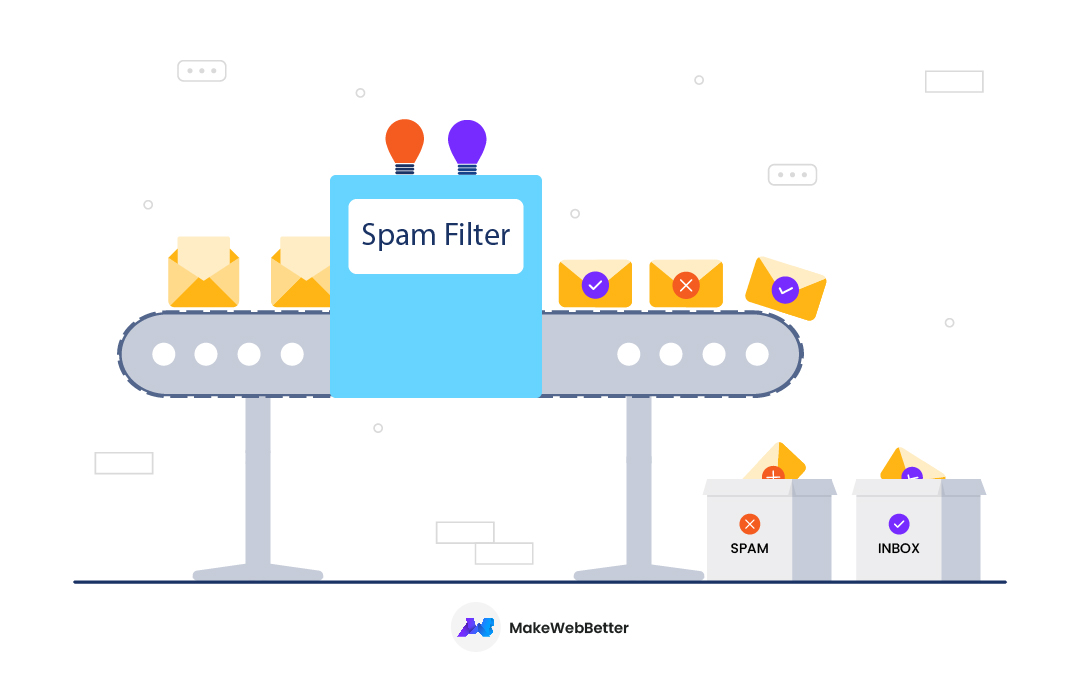Opening the Keys of Effective SEO: Bid Farewell to Spam Forever
Look Engine Optimization (SEO) is a critical facet of electronic advertising and marketing, permitting internet sites to reach their target audience and enhance their on the internet visibility. Amidst the ever-evolving landscape of Search engine optimization strategies, one consistent challenge continues to be: spam. In this conversation, we will certainly discover the impact of spam on Search engine optimization, dig into the world of black hat SEO techniques, and reveal essential strategies for applying white hat SEO methods.
The Influence of Spam on SEO
Spam can have a destructive influence on the performance of SEO techniques. On the planet of search engine optimization (SEO), spam describes any kind of type of low-quality and unrequested material that intends to manipulate internet search engine rankings. These spammy tactics might include keyword padding, hidden text, masking, and link schemes. While these techniques might give temporary gains, they eventually damage the long-term success of a SEO strategy.

Moreover, spam can adversely influence customer experience. Search engines think about different variables, such as web page tons speed and mobile-friendliness, when figuring out search positions. Spammy methods typically lead to slow-loading pages, puzzling designs, and unnecessary web content, leading to a poor user experience. This, in turn, increases bounce rates and decreases conversion rates, adversely influencing the total performance of search engine optimization efforts.
Understanding Black Hat Search Engine Optimization Methods
The usage of underhanded tactics to control internet search engine rankings, referred to as Black Hat SEO techniques, is a straight feedback to the unfavorable effect of spam on SEO approaches. These methods concentrate on exploiting susceptabilities in online search engine algorithms in order to attain greater rankings, typically at the expense of customer experience and the honesty of search engine result.
Black Hat search engine optimization techniques include practices such as key words stuffing, hidden message, masking, web link adjustment, and content scratching. Key phrase packing involves exceedingly utilizing key phrases in a website's web content to control search engines. Covert message describes concealing keyword phrases by making them the very same shade as the history or placing them off-screen. Cloaking is a method where various content is shown to browse engines and users, misdirecting online search engine concerning the actual material of a page.
Link adjustment includes acquiring or exchanging web links to unnaturally enhance an internet site's web link appeal. Web content scraping involves copying material from other web sites and publishing it on one's very own website without approval or acknowledgment.
While these strategies might cause temporary gains, they are extremely discredited by internet search engine and can bring about severe penalties, including being eliminated from online search engine indexes altogether. It is very important for internet site proprietors and search engine optimization professionals to comprehend the dangers connected with Black Hat SEO techniques and instead concentrate on lasting and honest SEO methods that prioritize offering useful web content and a favorable customer experience.

Trick Techniques for White Hat SEO
Among the most effective techniques to seo (SEARCH ENGINE OPTIMIZATION) is executing crucial strategies for White Hat SEO. Unlike Black Hat SEO methods, which aim to control online search engine formulas with spammy and dishonest methods, White Hat search engine optimization concentrates on maximizing web sites making use of ethical and reputable approaches. These techniques not just help enhance a website's exposure and positions on search engine result pages but additionally guarantee long-term success and sustainability.
One key approach for White Hat search engine optimization is producing pertinent and top notch material. This includes conducting extensive keyword research study to determine one of the most appropriate and beneficial search phrases for a site's target audience. By integrating these keywords normally right into well-written and insightful material, internet sites can attract natural website traffic and develop themselves as authoritative sources in their particular markets.
An additional important strategy is constructing top quality backlinks. This entails making web links from reliable and appropriate websites via guest publishing, material collaborations, and outreach campaigns. These back links signal to search engines that a web site is reliable and useful, causing boosted rankings and exposure.
In addition, enhancing internet site structure and efficiency plays a vital role in White Hat Search Engine Optimization. This includes maximizing site rate, improving mobile responsiveness, and making certain appropriate indexing of internet pages. By offering a smooth user experience and making it simpler for online search engine crawlers to browse and understand a site, these optimizations can considerably boost a site's positions.
Structure High-Quality Back Links

Nevertheless, it is very important to note that not all backlinks are produced equivalent. When it comes to back links, quality matters a lot more than amount. Building top quality back links includes getting web links from reliable and pertinent websites that have a strong on the internet existence and an excellent credibility. These back links are much more beneficial and carry more weight in the eyes of internet search engine.
To develop high-grade backlinks, you can utilize various methods such as visitor publishing on reputable blogs, producing useful and shareable material that normally attracts links, connecting to influencers or sector professionals for collaborations, and participating in relevant online forums or areas where you can link back to your site.
Monitoring and Reporting Spam Activity
Tracking and reporting spam activity is a critical step in maintaining a trustworthy and tidy online presence. As spam continues to evolve and come to be much more sophisticated, it is essential for businesses and internet site proprietors to remain alert and positive in attending to any type of spam and identifying activity that may be affecting their on-line track record.
By keeping an eye on spam weblink activity, companies can recognize and isolate any kind of undesirable or malicious content that might be harming their site's internet search engine rankings and reliability. This consists of monitoring for spammy web links, dubious user-generated web content, and any type of other forms of spam that may exist on the internet site.
Coverage spam activity is just as important, as it enables services to sharp internet search engine and various other pertinent authorities regarding any type of spammy or malicious habits. This assists to shield not just the business's own online reputation however additionally the integrity of the on-line community all at once.
To properly report and keep track of spam task, organizations can use different tools and strategies. This might consist of utilizing spam filters, routinely carrying out audits of site material, and actively involving with users to deal with any type of spam-related concerns or concerns.
Conclusion
In verdict, comprehending the impact of spam on SEO and differentiating between black hat and white hat strategies is important for efficient search engine optimization. By focusing on building top notch back links and very closely reporting and keeping an eye on spam activity, companies can improve their on-line exposure and avoid charges from internet search engine. Applying moral SEO strategies is essential to long-term read this post here success in the digital landscape.
In this conversation, we will check out the effect of spam on SEO, dig right into the world of black hat SEO strategies, and discover key techniques for implementing white hat Search engine optimization techniques. In the globe of search engine optimization (SEARCH ENGINE OPTIMIZATION), spam refers to any type of type of low-grade and unrequested content that aims to manipulate search engine rankings.One of the most efficient techniques to search engine optimization (SEO) is executing crucial strategies for White Hat SEO. Unlike Black Hat SEO methods, which intend to adjust search engine formulas via spammy and underhanded techniques, White Hat SEO concentrates on enhancing web sites making use of reputable and honest approaches.In final thought, recognizing the effect of spam on SEO and distinguishing between black hat and white hat strategies is important for efficient search engine optimization.